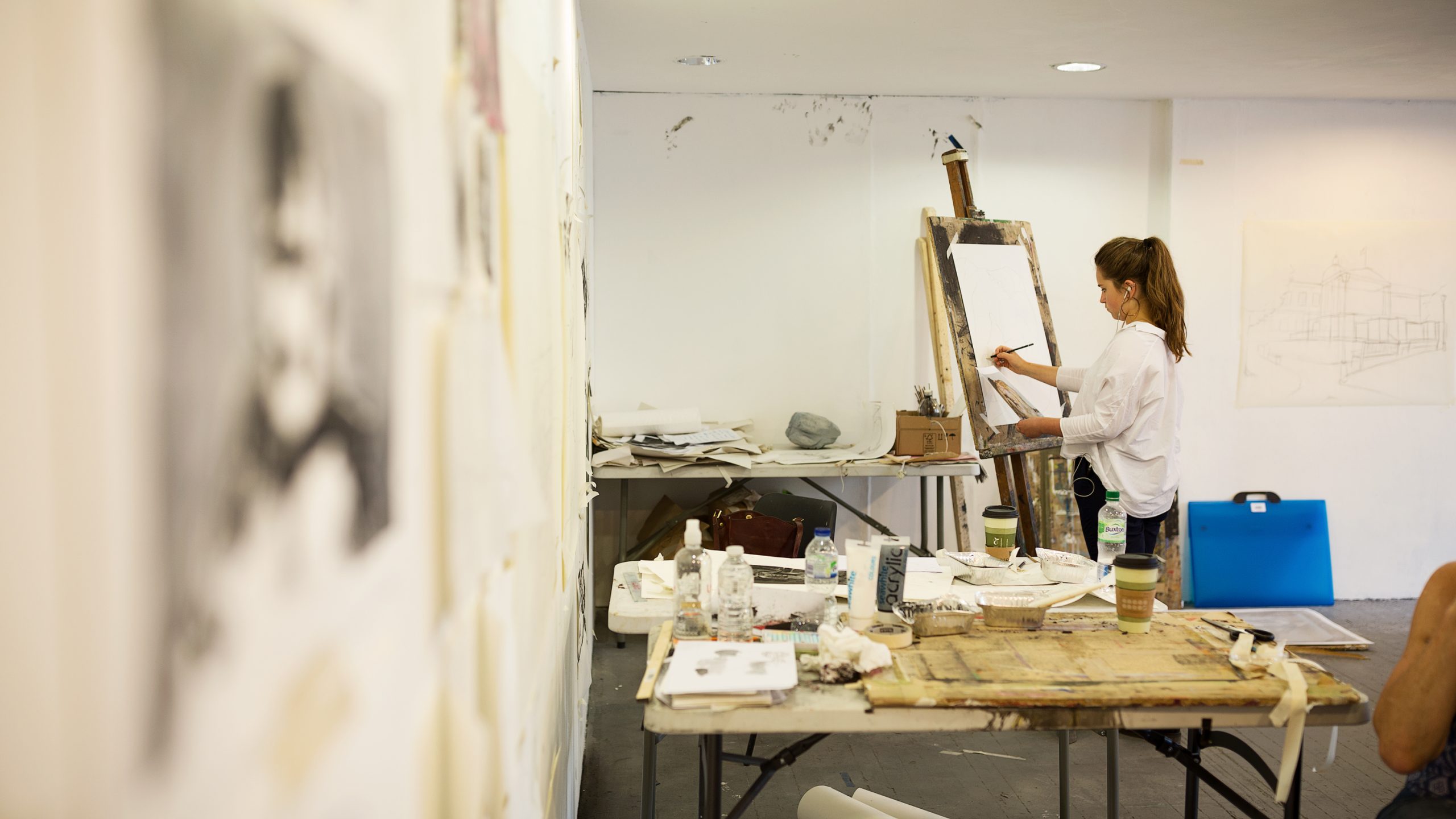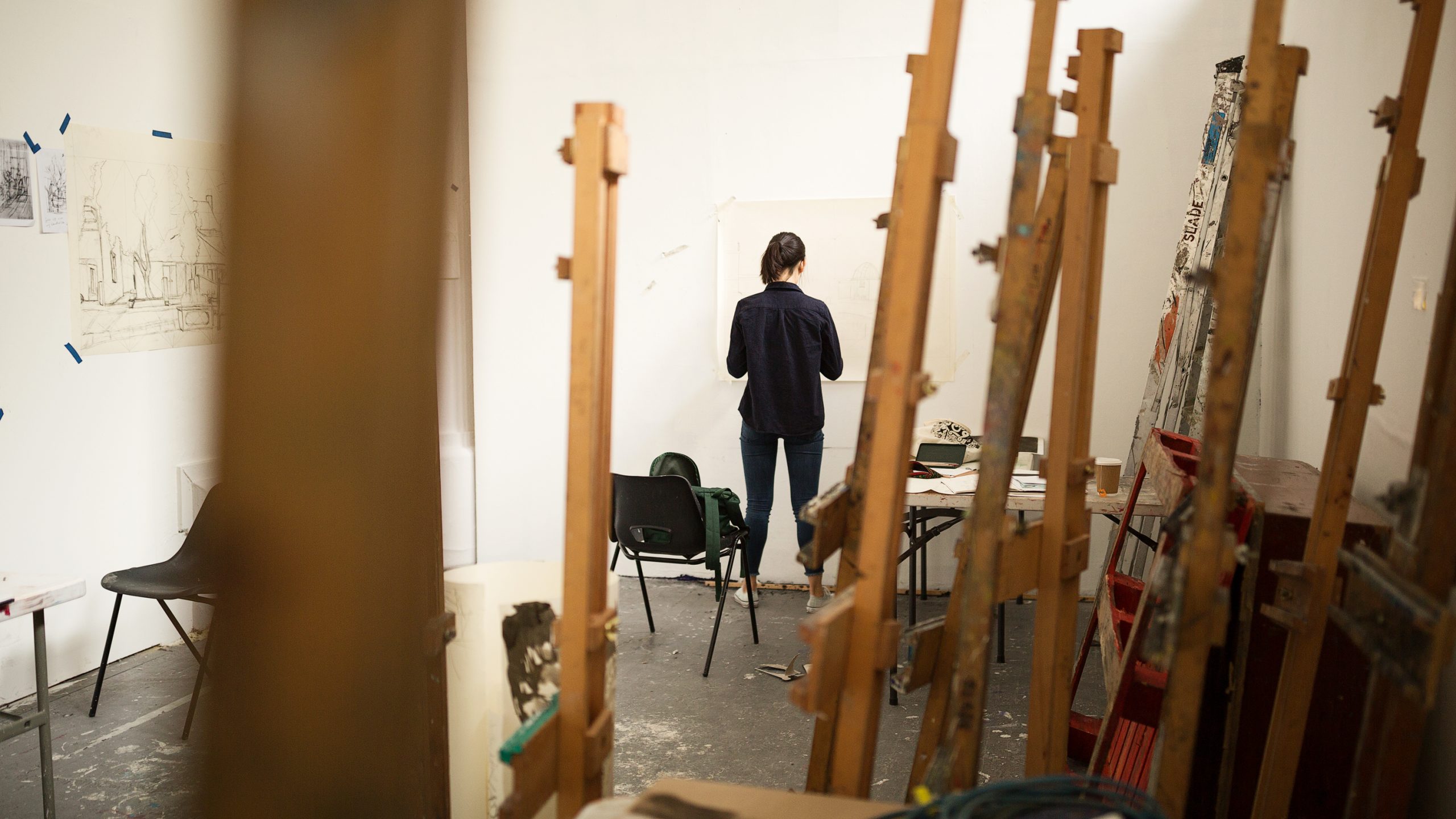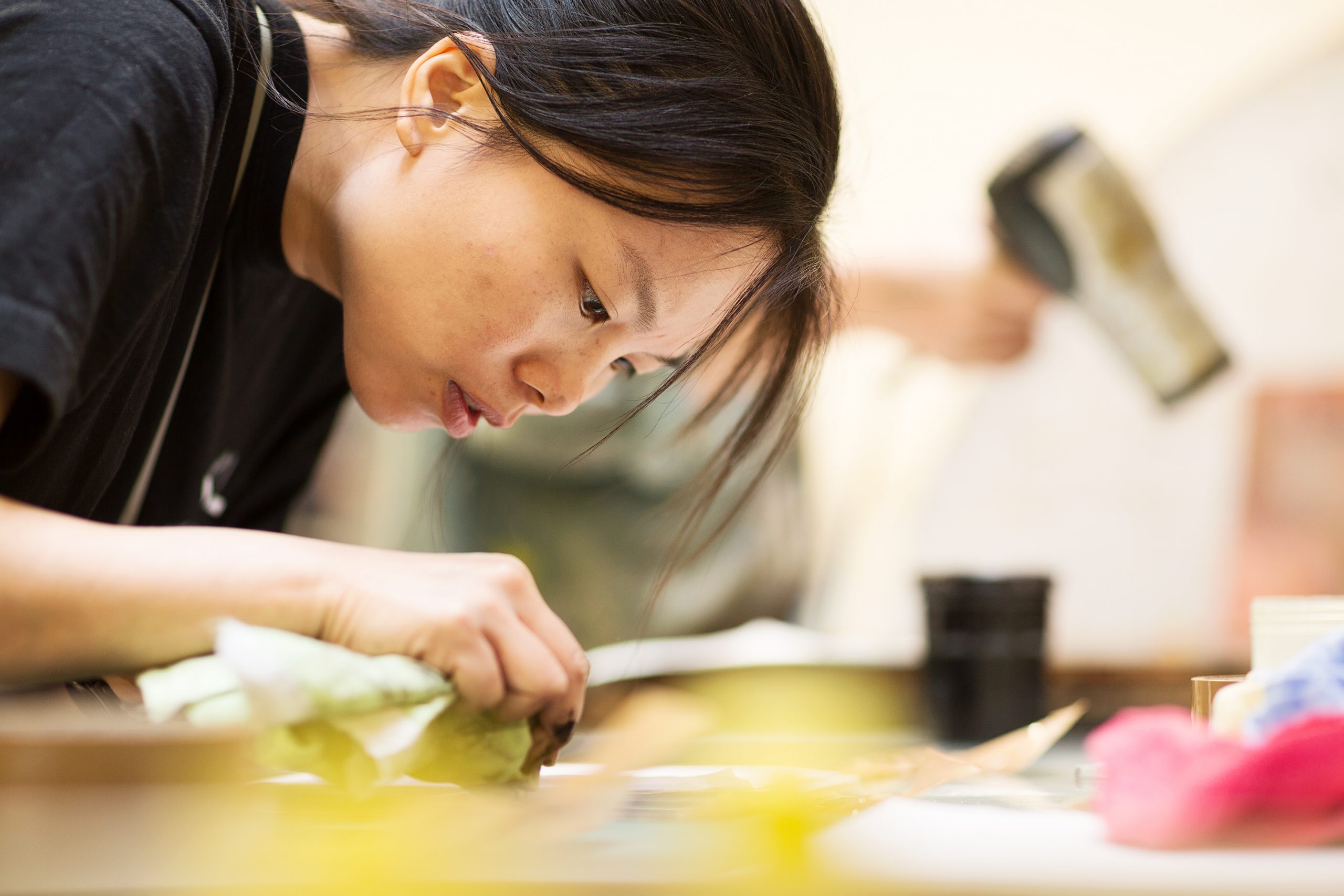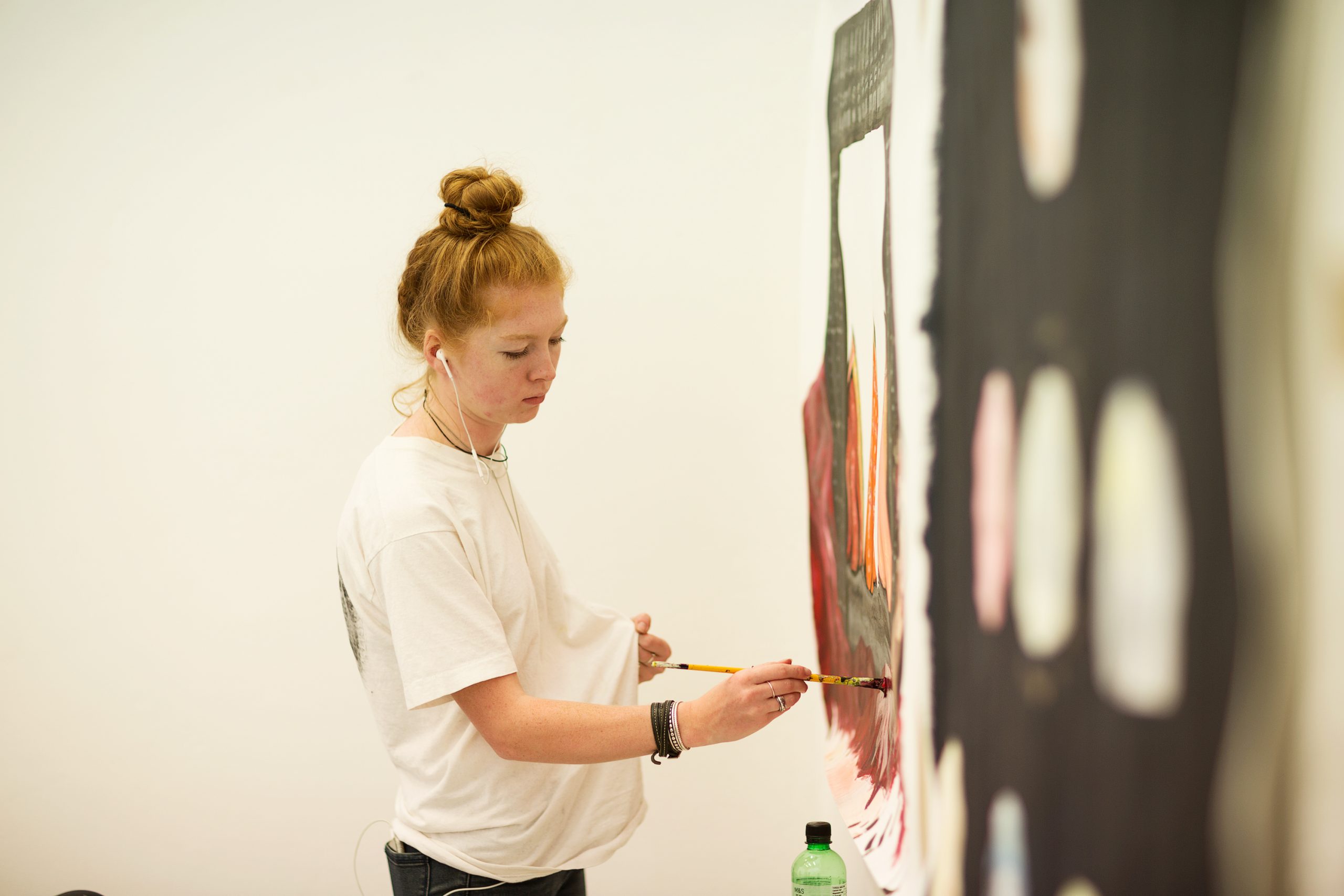
How to apply: from portfolio to personal statement to interview
Entry requirements for the Slade

A Levels
Grades ABB
No specific subjects, but a portfolio of work is required. At least two A level subjects should be taken from UCL’s list of preferred A level subjects.GCSEs English Language and Mathematics at grade C or 5.
For information on the BA: https://www.ucl.ac.uk/prospective-students/undergraduate/degrees/fine-art-ba
For information on the BFA: https://www.ucl.ac.uk/prospective-students/undergraduate/degrees/fine-art-bfa
Contextual offer
Access UCL is UCL’s alternative offer scheme for students from groups that are underrepresented at UCL. Eligible students who successfully complete the Access UCL scheme will receive a reduced offer of up to two grades below the standard UCL offer (with the lowest offer at BBB) for the programme they have applied for.
In order to be eligible for the scheme you must be attending/have attended a UK state school for A levels/IB Diploma and meet two out of the following criteria (please note that this eligibility criteria is for students applying in 2021/22 for 2022 entry):
- Attend or have attended a low-performing school for either GCSE or A level.
- Live in an area which has a high level of financial, social or economic deprivation.
- Live in a neighbourhood which has a low progression rate to higher education.
If you are eligible for Access UCL you do not need to do anything in addition to the standard UCAS application, your application will be automatically flagged when we receive it. For more information on Contextual offer please visit https://www.ucl.ac.uk/prospective-students/undergraduate/application/entry-requirements/access-ucl-contextual-offers


Portfolio
What we look for:
We look at the variety of work you have produced and look out for the way you might follow a train of thought visually. This could be shown through video, in 3D or in paint perhaps. This is your time to show the admissions tutors what you are really interested in and demonstrate your enthusiasm for making.
A portfolio needs to tell the story of your development so far. It needs to:
- Present your skills and experience of working with different methods and mediums. In your portfolio we are looking for an ability to work independently and to self-initiate work.
- Present any experimentation you have undertaken when exploring ideas and approaches to making art. We look for how your imagination, creativity and critical awareness are being used through the mediums, materials and processes you use to make your work.
- Most importantly, your portfolio needs to be the best reflection of your interests in mediums, processes, subject matter and ideas. Don’t include work unless you feel it is significant and shows you are self-motivated and working independently.

Labelling and annotation:
The way that you order your portfolio is for you to decide but it is helpful if artworks are dated and given a title (if they have one) and that information about size, medium or duration (if applicable).
All labels should be clear and concise e.g.;
Title of work, Year made
Dimensions
Materials and duration if relevant
If work requires more than a label then think about the key information that needs to be communicated. This might be the case for video, photography, sound or performance work. A brief summary or synopsis is sufficient: focus on explaining the subject or concept rather than saying what the work means. Remember, keeping it short and concise is best.
Video and audio work:
- Audio/video work can be uploaded online. If you have audio/video work of long duration it is advisable to submit a showreel of clips, although you can submit the full-length work too. Applicants with video and audio work or performance elements to their work may include a showreel with a maximum duration time of five minutes, no larger than 500mb.
Documenting
- When applying online, and uploading videos or photographs of installations, large paintings, performance or sculpture, then the quality of your submission is important.
- When documenting work it is important that the image is in focus and well lit, and if possible, that the setting for the artwork is not compromised by other objects, furniture or shadows.
- Details of large paintings, sculptures and installations can be useful for helping a viewer understand a work. Alternatively, making a video clip can be a good way of documenting an installation or performance.
With all this in mind, do what makes sense for you and the work you have produced and what you think is your best work. You can show sketchbooks, note books, drawings, writings, anything you feel is a relevant part of your working process and thinking.
How to organise your portfolio:
Arranging your portfolio chronologically, in the order that you made your work, is one approach you can take. It does not matter if the portfolio begins with your most recent work or earliest art pieces. There are other ways of arranging your portfolio though, such as:
- Presenting sections that address themes explored in your art practice
- Organising your work in relation to the different approaches you have investigated (such as a drawing, 3D work, performance, painting, etc.).
If you are unsure, it is good practice to start with your strongest work first.


How to write a personal statement
Your UCAS application requires a personal statement. For a portfolio-based degree this is slightly different.
Your personal statement for a portfolio-based degree is an important part of your application and your opportunity to explain what you are exploring in your artwork, the artists you are interested in, your ideas and what you hope to do if you get a place at art school.
TOP TIP: Some people will apply for mostly non portfolio-based degree programmes on their UCAS form, but want to apply for one portfolio-based degree to give it a try e.g.: an art history degree and one fine art degree. In this case, to make your statement relevant for the fine art option, you can send a statement specific to fine art to slade.tlo@ucl.ac.uk and admissions staff will add it to your application. When the fine art admissions tutors view your portfolio they will have the relevant statement.
Ask someone to look at your portfolio and read your statement, whether that is a teacher, relative or friend, and explain to them what your reasons are behind the ordering of your portfolio and the content of your statement. See what they think. Feedback can be helpful as it allows you to think further about how you are presenting yourself and your work.


The interview
For many, interviews can be nerve-wracking. It may help to remind yourself that you have been invited to the interview because the panel is interested in your work and keen to hear more and talk with you about it. They see potential in your practice so be confident and believe in your work.
Interviews are 20 minutes long. You have 10 minutes to present your work.
Followed by 10 minutes to answer the questions below:
Why have you applied to the Slade?
Why have you applied to the BA/BFA
How would you go about starting a new piece of work without instruction?
Further questions will specifically relate to your work:
When presenting your work don’t try to show us everything but focus on works that you feel are your strongest. Tell us what is important and relevant for you. This might be mediums and materials, interests and influences, ideas and thinking.
